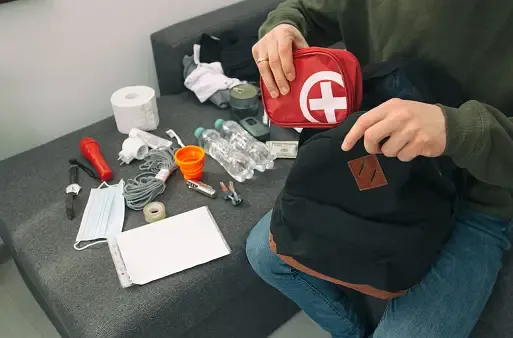
GET A QUOTE
How to Refill Your First Aid Kit?
So, you've got yourself a first aid kit. Good job! But hey, it's not a one-time thing. You need to keep it up-to-date. You might forget to replace stuff or check expiry dates, but that's crucial. Let's talk about the stuff you use a lot, what expires quickly, and some other useful bits for first aid kit owners.
Most Used First Aid Stuff
You know those things you reach for the most? Like, for cuts, headaches, or swelling? Well, you need to keep an eye on these:
Antibiotic Ointment
Bandages
Gauze
Instant Ice Packs
Pain Medications
Especially if you're a bit clumsy or have kids who are. You don't want to run out of bandages when your kid's crying and bleeding (even if it's just a little bit).
Since you use these things a lot, try to restock them ASAP. If you're forgetful like me, set a reminder once a month to fill up your kit.
Quickest to Expire First Aid Stuff
Sadly, things expire, even first aid supplies. These are the ones that go bad pretty quickly, usually in about two years:
Bandages
Burn Gel
Medications
Ointments
Saline Wash
I know, bandages expiring sounds weird, right? But the sticky part wears off over time, especially if it's hot. Also, they might not be sterile anymore if the packaging gets a little rip.
When things like burn gel or ointments expire, they could make things worse. They might irritate your skin or cause other problems.
As for medications, they lose their power after a while. They might not work as well or even make you feel sick. So, check the expiry date and keep an eye on how you store them. Extreme heat can make them go bad faster.
Why You Need to Care about Expiration Dates?
Expired stuff can mess you up. Adhesives get weak, meds stop working, and topicals might cause infections. Some things, like antibiotics, can make you really sick if they're past their prime. And if something looks off, just chuck it. It's better to be safe than sorry.
Follow These Steps to Refill Your First Aid Kit
1. Assess Your Current Supplies
Before you start restocking your first aid kit, take a moment to assess its current contents. Empty out the kit and lay everything out in front of you. Check expiration dates on medications and ointments, and discard any items that are past their prime. This step ensures that you're starting with a clean slate and only replenishing what's necessary.
2. Make a List
Next, create a list of essential items that you need to restock in your first aid kit. This list may include bandages, adhesive tape, antiseptic wipes, gauze pads, scissors, tweezers, gloves, and over-the-counter medications like pain relievers and antihistamines. Having a clear list will help you stay organized as you shop for supplies.
3. Purchase Supplies
With your list in hand, head to your local pharmacy or medical supply store to purchase the necessary supplies. While you're there, consider picking up any additional items that you think might be useful in emergency situations. It's better to be over-prepared than under-prepared when it comes to first aid.
4. Organize Your Kit
Once you've gathered all the supplies, it's time to organize your first aid kit. Place items neatly inside, making sure that everything is easily accessible in case of an emergency. Consider using small containers or zip-top bags to keep items organized and prevent them from shifting around inside the kit.
5. Label and Date
To keep track of when you last restocked your first aid kit, label each item with its expiration date and the date it was added to the kit. This simple step ensures that you'll always know when it's time to refresh your supplies again in the future.
6. Store in a Convenient Location
Finally, choose a convenient and easily accessible location to store your first aid kit. Whether it's in the bathroom cabinet, under the kitchen sink, or in the glove compartment of your car, make sure it's somewhere that everyone in your household can quickly locate in case of an emergency.
Conclusion
Refilling your first aid kit may seem like a small task, but it's one that can have a big impact when it comes to handling emergencies effectively. By following these simple steps and staying proactive about keeping your kit stocked, you can ensure that you and your loved ones are always prepared for whatever life throws your way.

